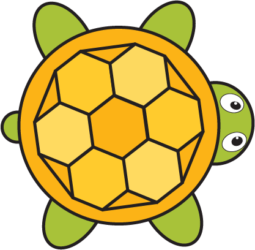The purpose of this chapter was threefold. 1. To review the background research from the diverse branches of the field. 2. To summarize what we currently know about the opportunities offered and challenges presented by multi-representational learning. 3. To predict future trends in the research with multi-representational learning.
- Background
Multi-representational learning brings together three main fields of study with different methodological approaches: cognitive sciences, expertise research, and learning associated with the advancement of technology.
Learning with multiple representations research borrows from the field of cognitive psychology with Mayer’s Multimedia Learning Theory (2014), Sweller’s Cognitive Load Theory (1998), and Schnotz’s Integrated Theory of Text and Picture Learning (2005) as the foundations. Sharing common themes, these theories assume that understanding is enhanced when learners’ working memories are not overloaded, and therefore, environments should be designed to use representations in ways to minimize their impact on working memory. These theories also suggest there are two modalities of learning – verbal and visual. Multiple representations can take advantage of both these modalities, therefore, can lead to better learning. This type of research was mostly experimental, separate from the context, and there is a demand to do more studies in situ.
The second area of research develops from the understanding of expert performance in a domain that uses multiple representations. In such fields, representations, among other things, are at the core of a community of practice, as they mediate communication between members. These studies mostly explore how representations are used in practice and offer a rich picture of how construction, selecting, and coordinating different representations is fundamental to the praxis of a professional. However, transferring this multi-representational knowledge into a classroom is challenging.
Finally, the development of technology influences the research of multi-representational learning. At a basic level, textbooks and their associated online versions, have many representations from diagrams, photos, sounds, videos, and animations. Also, representational technologies previously only available to professionals are now more and more in the hands of students. Simulations are increasingly integral to the science and mathematics classrooms. All these improvements in technology correspond to an increase of multiple representations that students need to be familiar with. Learning sciences uses design-based research studies, among others, to explore the best ways of learning with these new forms of representation.
- Current Research on Multiple Representations
The most important lesson from the research on learning with multiple representations is to be skeptical about the claim that more is always better. The author suggests that the following guiding statement encompases all the current research and best practices: multiple representations in learning are “well-designed combinations of representations to make their key (task-relevant) aspects more accessible to learners for beneficial cognitive, social, and affective processes”. Firstly, representations should be chosen based on task. Secondly, the analysis needs to embrace the representational system as a combination and not each representation in isolation. Furthermore, multiple representations focus on individualized cognitive accounts, social function in communities of practice, and motivational components. Finally, learning with multiple representations takes time and is a process, mastering aspects of representations in isolation and in combination, understanding how representations encode and present information, and knowing how to select or construct representations for a given task.
- Future
Based on recent trajectories in the research, some scenarios seem more likely in the future of this domain. 1. Learning with representations that more actively involve the body, such as gesturing, participatory simulations, and somatosensory representations will become more common. This resonates with a more embodied approach to cognition. 2. More research will be done on learners constructing and even inventing their own representations for learning. Such trends are already apparent through research on construction and maker spaces, through educational software such as CogSketch and beSocratic, and model based learning through drawing. 3. To fill the research gap, future studies should focus on how teachers teach with and teach about multiple representations to best support learners. 4. Finally, research on assessment such that it is aligned with multi-representational goals is an area worthy of exploration.
“The future is multi-representational!” Since I am passionate about this topic and intend to pursue it during my PhD studies, I am glad to see this important field has such foundational beginnings and such a promising future.
References:
Ainsworth, S. (2018). Multiple representations and multimedia learning. International handbook of the learning sciences, 96-105.

